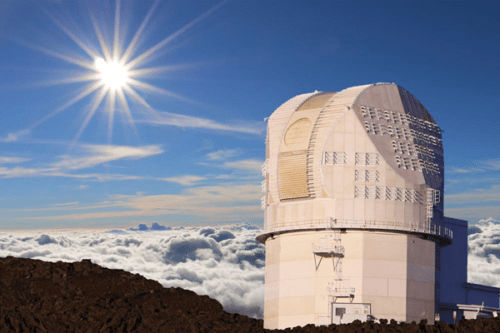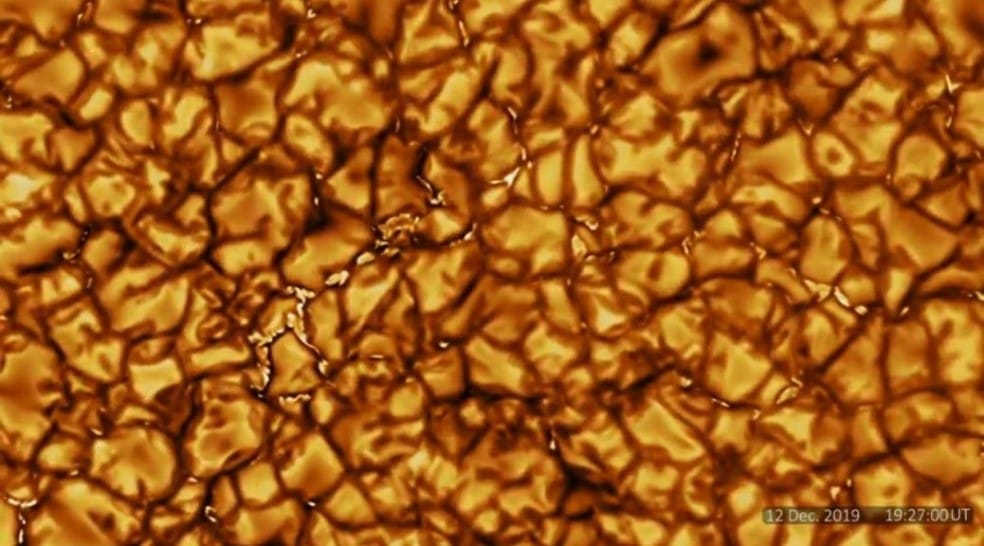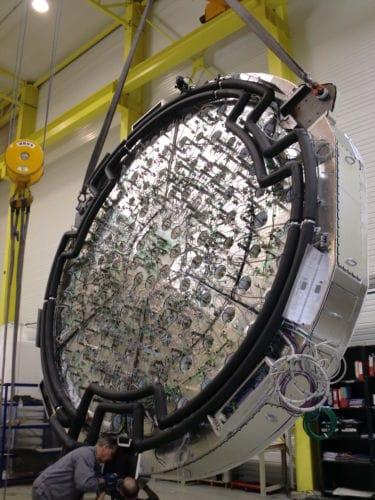The National Science Foundation (NSF), the National Solar Observatory (NSO) and AURA* just released DKIST’s first images!
Located in Hawaï, the Daniel K. Inouye Solar Telescope revealed unprecedented details of the Sun’s surface. Its entry into service opens up a new era for solar science and should allow a leap forward in the understanding of the Sun and its impacts on our planet.

DKIST on Mount Haleakala, Maui, Hawaï
With a primary mirror of 4.2 m in diameter, DKIST – formerly called Advanced Technology Solar Telescope (ATST) – is gigantic compared to the other solar telescopes. It is packed with complex technologies in order to capture very detailed images of the Sun’s constantly-changing surface with a resolution twice better than former solar observatories. It is an off-axis telescope, equipped with an active and thermally-controlled primary mirror and adaptive optics.
One of the key elements of the telescope, the primary mirror cell, has been designed and manufactured in Belgium by AMOS. It consists of a 9 ton high-precision electro-mechanical subsystem which guarantees that the 4.2 m primary mirror keeps its exact position and shape in all circumstances, despite continuously changing orientations and temperatures.
The performances of this system are mind-blowing:
- The 3-ton mirror is positioned with a precision of a few micrometers, i.e. 40 times better than the thickness of a human hair, in all positions of the constantly moving telescope.
- 142 actuators will continuously correct the shape of the thin primary mirror to an accuracy better than 45 nm RMS. As a comparison, if the mirror was the size of the Atlantic Ocean, the perfectness of the surface would be equivalent to removing all waves higher than a few centimeters.
- The primary mirror uniformity will be controlled within half a degree Celsius, from early morning to late evening, including at noon when the mirror is fully exposed to the sun heat.

Active solar cell of the DKIST 4.2 m primary mirror during assembly at AMOS (Belgium)
The unprecedented resolution of these images demonstrates the power and precision of this new telescope. Philippe Gilson, AMOS’ CEO, stated: “With this project, AMOS demonstrates its expertise in the field of large solar telescopes, in addition to its extensive track record in the field of astronomical telescopes. Each project in this domain is a new technical challenge that the AMOS teams take successfully, thanks to their passion and expertise.
More info: https://www.nso.edu/press-release/inouye-solar-telescope-first-light/
 info@amos.be
info@amos.be
 +32 4 361 40 40
+32 4 361 40 40


 see all
News
see all
News